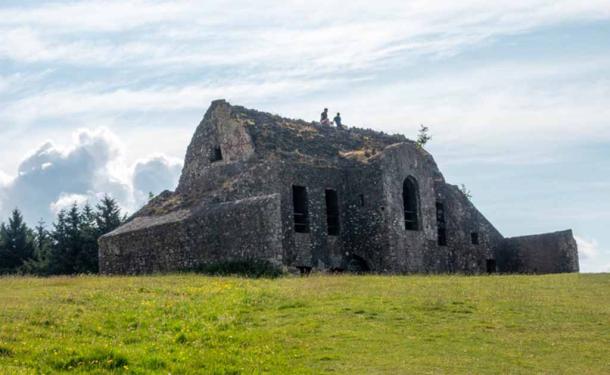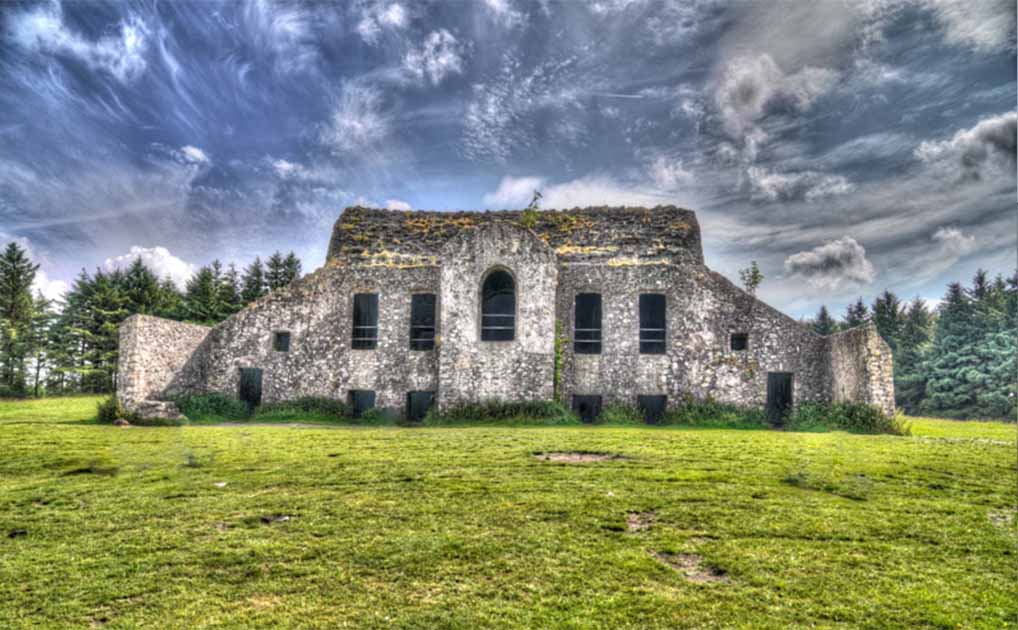Exploring the Enigma of the Hellfire Club: Dublin's Haunted Secret
Mystical and occult places in the world have always attracted intrigued explorers and lovers of the odd and quirky. Often enough, such places are all around us, nestled in their enigma without us even knowing it. One such place exists quite close to the modern-day metropolis of Dublin. Now, the name could be misleading. The “Hellfire” is no modern disco club with a penchant for the occult. It is a ruin with a much greater heritage, one that reaches into the far and forgotten history of Ireland. So, what are the dark secrets surrounding Dublin’s mysterious Hellfire club?
Hellfire Club, Curses, and Distant History
The Hellfire Club on Montpelier Hill was built in 1725 by William Conolly, who was a prominent figure in Irish politics and a wealthy landowner. A Whig politician, Conolly was the Speaker of the Irish House of Commons and held substantial influence during his time. He constructed the lodge as an occasional summer residence, a hunting lodge, and a meeting place for his circle of friends, who were known for their lavish lifestyles and indulgence in various vices. Their behavior was, to say the least, controversial. Debauchery and occult practices were suspected to be rampant at Montpelier Hill, and soon enough, rumors began to circulate. Rumors of demonic practices and the paranormal.
- Castellaccio di Messina: Italy’s Most Haunted Castle (Video)
- The Haunted Plague Island of Poveglia: A Dark and Twisted Past

The 18th century Hellfire Club building. (© William Alexander)
The name "Hellfire Club" itself was not unique to Dublin. Similar clubs existed in other parts of Britain during the 18th century. These clubs were often associated with immoral and scandalous behavior, including excessive drinking, gambling, and illicit activities. The Hellfire Clubs of the era were known for their disregard of religious and societal norms, which added to their reputation as places of debauchery and decadence. But the Hellfire Club at Montpelier Hill was not like the others. From the start, it had a terribly infamous reputation that crossed into realms obscure and inexplicable.

A dark and ominous building, supposedly built for dark purposes. (© William Alexander)
In time, Connolly’s Hellfire Club became one of the most famous and notorious of its kind. It attracted influential and wealthy members from Dublin's elite circles, including politicians, artists, writers, and other prominent figures. It's worth noting that while the Hellfire Club was associated with immoral behavior, the extent of its members' actual involvement in supernatural or occult practices is unclear. The club's reputation for involvement in the occult and devil worship may have been fueled by rumors, gossip, and sensationalized stories passed down through the years. Nevertheless, the mystery remained.

The main hall room of Dublin’s Hellfire Club building. (© William Alexander)
Demonic Rituals - or Lavish Politician’s Parties?
The Hellfire Club itself was founded in 1737, by the Freemason Richard Parsons, 1st Earl of Rosse, and painter and fraudster James Worsdale. In time, other infamous personalities of the time joined the club, including the so-called “King of Hell”, Simon Luttrell 1st Earl of Carhampton, Henry, 4th Baron Barry of Santry (who was tried for murder and convicted in 1739), and others. It is said that the members gathered around a table, leaving one chair vacant for the Devil to sit. Their mascot was reputedly a black cat. But whether or not they practiced any macabre doings, remains a historical enigma. In fact, it is not known to what extent the club members used the building, since the remoteness of Montpelier Hill. Reaching it at that time period would be even harder than it is today.

Were these dark, lower chambers used just for storage, or more macabre practices? (© William Alexander)
Still, the Hellfire Club's association with the supernatural and paranormal likely emerged from the combination of its notorious reputation and the eerie ambiance of the building itself. The ruins of the Hellfire Club on Montpelier Hill feature architectural details and carvings that can be interpreted as occult symbols, which further added to the building's mystique. What is more, the club's connection to the supernatural was reinforced by various ghost stories and legends that emerged over time. These tales depicted members engaging in dark rituals, encountering demonic entities, or experiencing supernatural phenomena within the club's premises. Such stories have perpetuated the Hellfire Club's reputation as a place steeped in dark mysticism. And once they caught on, they would remain forever.
- Haunted Mirrors, Bloody Mary and Superstitious Mirror Mythology
- Former Home of South African Statesman Rumored To Be Haunted
Montpelier Hill’s Ancient Heritage and a Unique Local Attraction
The club was also said to be haunted and cursed, because the original builders erected it on the spot of a prehistoric cairn with a passage grave. Stones were taken from the cairn and used in the construction. Rumors of a curse began spreading when the roof was blown away soon after the construction was finished. And from then on, Montpelier Hill always had an eerie reputation. The reputation was cemented when the building was struck by lightning in 1741, and was damaged by fire.

This fireplace used a stone from the ancient burial cairn. (© William Alexander)
The remains of an ancient cairn were actually discovered on the site, in 2016. Remains of a passage grave dating back 5,000 years were unearthed by archaeologists, yielding some valuable and unique finds. Amongst these were Neolithic flint tools, axe heads, and some unique carved art. Sadly, most of the grave is situated below the Hellfire Club, rendering further excavation impossible. What is more, archaeologists state that the grave could be quite similar to the famed Newgrange, making the impossibility of excavation all the more unfortunate.
Today, the ruins of the Hellfire Club serve as a historical and cultural attraction. Visitors can explore the remnants of the building, admire the panoramic views, and learn about the club's intriguing history. It's important to note that while the Hellfire Club has a dark and supernatural reputation, many of the legends and stories associated with it are likely embellishments and exaggerations. Nevertheless, the club's history and legends have captured the imagination of locals and visitors alike, making it an intriguing part of Dublin's folklore.
Top image: The Hellfire Club building on Montpelier Hill, Dublin. Source: © William Alexander
References
Lord, E. 2008. The Hell-Fire Clubs. Sex, Satanism and Secret Societies. Yale University Press.
Ryan, D. 2012. Blasphemers & Blackguards: The Irish Hellfire Clubs. Merrion Books.
Walsh, D. 2008. Haunted Dublin. Nonsuch Publishing.


















Comments
Live beside it. Still won't go up there at night